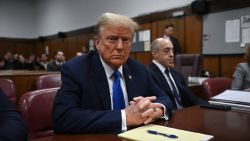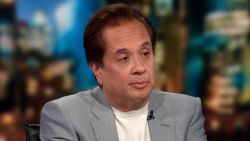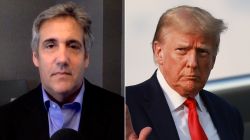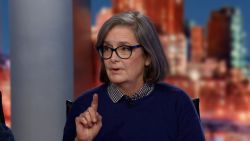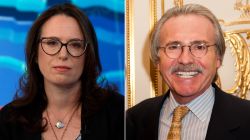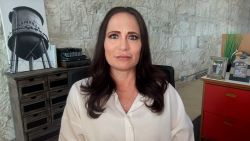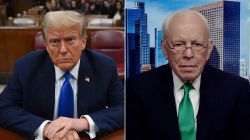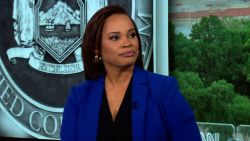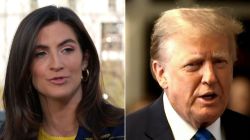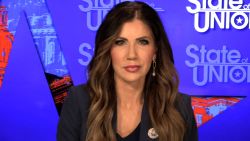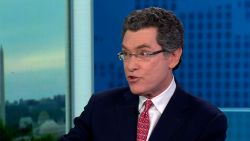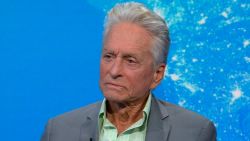Another coronavirus briefing. Another series of false claims.
Speaking Tuesday in the Rose Garden of the White House, President Donald Trump denied making a comment he did make. He criticized the World Health Organization for the same thing he has done before. He wrongly suggested he was the only national leader to impose travel restrictions on China. He claimed he was “authorizing” governors to lift coronavirus restrictions even though this power always belonged to governors. He falsely claimed, again, that “nobody ever thought” there would be a crisis like this. And he repeated some of his favorite false claims about his tariffs on China.
Here’s a rundown of Trump’s claims, and the facts around them.
Trump’s praise for China’s supposed transparency
After he criticized the World Health Organization for praising China’s supposed transparency over the coronavirus, Trump was pressed about his own previous praise of China’s supposed transparency. “I don’t talk about China’s transparency,” Trump responded. “You know, if I’m so good to China, how come I was the only person, the only leader of a country, that closed our borders tightly against China?”
Facts First: Trump did praise China, and its president, Xi Jinping, for its supposed transparency. Moreover, Trump didn’t completely shut down travel between China and the United States; nearly 40,000 people traveled from China to the United States after he announced travel restrictions, according to an April 4 New York Times analysis of data collected in both countries. And Trump was far from the only leader to impose travel restrictions from China. A Washington Post analysis found that 38 countries imposed significant travel restrictions on China “before or at the same time the U.S. restrictions were put in place.” (The Post analysis did not count 12 other countries “that took some sort of action before the United States but with measures that were not as sweeping.”)
Trump has explicitly praised China for “transparency” related to the virus. On January 24, he tweeted that “China has been working very hard to contain the Coronavirus. The United States greatly appreciates their efforts and transparency,” and that “In particular, on behalf of the American People, I want to thank President Xi!” (On March 21, Trump defended his initial claim that China had acted with transparency by arguing that “China was transparent at that time, but when we saw what happened, they could have been transparent much earlier than they were.”)
Trump consistently overplays the severity of his travel restrictions on China. They did not constitute a complete border closure: They did not apply to American citizens, permanent residents or many of the family members of citizens and permanent residents. The New York Times reported that nearly 40,000 people have flown to the US from China since Trump’s restrictions went into effect February 2.
‘Authorizing’ the governors to reopen
Trump claimed at Monday’s briefing that he has “total” authority to decide when states lift their coronavirus-related social and economic restrictions. Backtracking Tuesday, he said: “I will be speaking to all 50 governors very shortly and I will then be authorizing each individual governor of each individual state to implement a reopening, and a very powerful reopening plan, of their state at a time and in a manner as most appropriate.”
Facts First: Trump was asserting authority many legal scholars say he does not have. There is no legislation that explicitly gives the power to authorize (or refuse to authorize) governors to lift their own restrictions, and many legal scholars say governors have a long-established constitutional authority over public health matters in their states. In other words, Trump was claiming to be handing governors leeway that was never his to hand out in the first place.
What you need to know about stay-at-home orders
Trump’s assertion Tuesday came in the context that he was backtracking from his suggestion Monday that he might compel governors to lift restrictions against their wishes. On Tuesday, he was asserting power while also saying he wasn’t going to use all of it. But the assertion was still inaccurate.
As we explained after Trump claimed Monday that the president’s “authority is total” on the subject of coronavirus restrictions, there is no law that explicitly gives the president the power to override states’ public health measures. Many legal scholars said Monday that the states have a well-established constitutional authority to address public health issues. Some Republican lawmakers, including Sen. Marco Rubio of Florida and Rep. Liz Cheney of Wyoming, also spoke up to reject Trump’s Monday claim.
Trump also said Tuesday that he would be closely watching governors and that he would “come down on them very hard” if they do not do a good job. It is possible he meant there that he would criticize them sharply or do something else that is within his power.
You can read a full fact check of Trump’s Monday claim here.
Trump’s opinion on Kennedy Center funding
Trump said Tuesday that he “hated” a provision in the $2.2 trillion pandemic relief bill that provided $25 million to the John F. Kennedy Center for the Performing Arts in Washington. He blamed Democrats for the provision.
“Last time they put Kennedy Center in. I hated putting Kennedy Center in. I have great respect for Kennedy Center, but I hated putting it in the bill because it’s just not appropriate, right? But they wanted it in for whatever reason; they had their own political reason. And, John, I said: ‘Watch the way that blows up.’ And it blew up – I think it blew up in their face,” Trump said.
Facts First: Trump defended the Kennedy Center funding the day the Senate passed the relief bill, March 25. He said then that “they do need some funding,” since “the Kennedy Center has suffered greatly because nobody can go there.”
Trump did tell reporters on March 25 that he had believed the Kennedy Center funding would make for a “lousy sound bite,” and he noted that it was a Democratic request. But he also said, “I’ll tell you what: I approved that.” And he said, “I’m a fan of that,” though he wasn’t clear if he was referring to the funding provision in particular or the Kennedy Center itself. He proceeded to compliment the Kennedy Center, saying that “they do a beautiful job.”
In a March 26 interview on Fox News, Trump described the Kennedy Center funding as a concession to Democrats that was less objectionable than other concessions Republicans had to make.
“So we end up giving them something for Kennedy Center. We end up giving them something for – far worse than that. Look, say what you want about Kennedy Center … you know, the Kennedy Center got hit hard. I mean, there aren’t too many people watching, I said today, ‘Romeo and Juliet,’ OK? …You can’t pretty much go in because of the – what’s going on with the virus. But beyond – far beyond Kennedy Center, we give things that we don’t want to give.”
How unforeseen the coronavirus crisis was
At Tuesday’s briefing, Trump blamed any shortages in medical equipment or resources on past administrations and reiterated his belief that no one could have been prepared for the current situation because these circumstances were unforeseen. “In all fairness to previous administrations, nobody ever thought anything like this was going to happen,” the President said.
Facts First: This is false. The US intelligence community and public health experts had warned for years that the country was at risk from a pandemic. Experts had also warned that the country would face shortages of critical medical equipment, such as ventilators, if a pandemic occurred.
You can read a full fact check here about some of the pandemic warnings. You can read a full fact check here about warnings on the need for additional ventilators in a pandemic.
Trade with China
After CNN’s Kaitlan Collins asked whether the President wanted to walk back his previous comments praising China for its transparency, Trump replied that he’s “always respectful of China.” He then pointed to the trade deals signed between the US and China, claiming that China had paid the US “nothing in any previous administration.” Later he added, “They’re also paying us 25% or $250 billion in tariffs. So we’re taking in – wait a minute – we’re taking in billions of dollars for China, from China. They never paid us 10 cents. That’s a great thing.”
Facts First: Study after study has shown that Americans, not China, are paying most of the cost of Trump’s tariffs. Aside from that, it’s not true that the Treasury has never received “10 cents” from tariffs on China or got “nothing in any previous administration.” The US has had tariffs on China for more than two centuries. FactCheck.org reported that the US generated an “average of $12.3 billion in custom duties a year from 2007 to 2016, according to the U.S. International Trade Commission DataWeb.”







